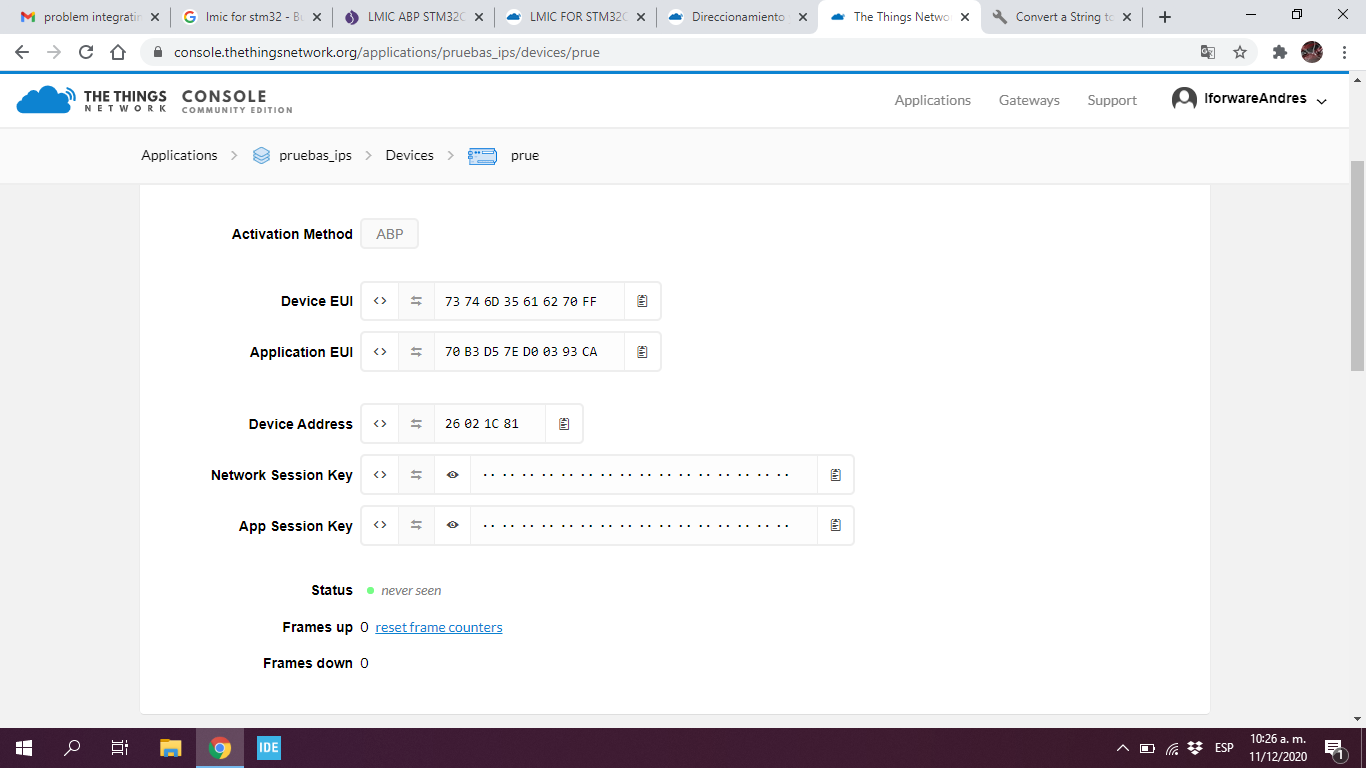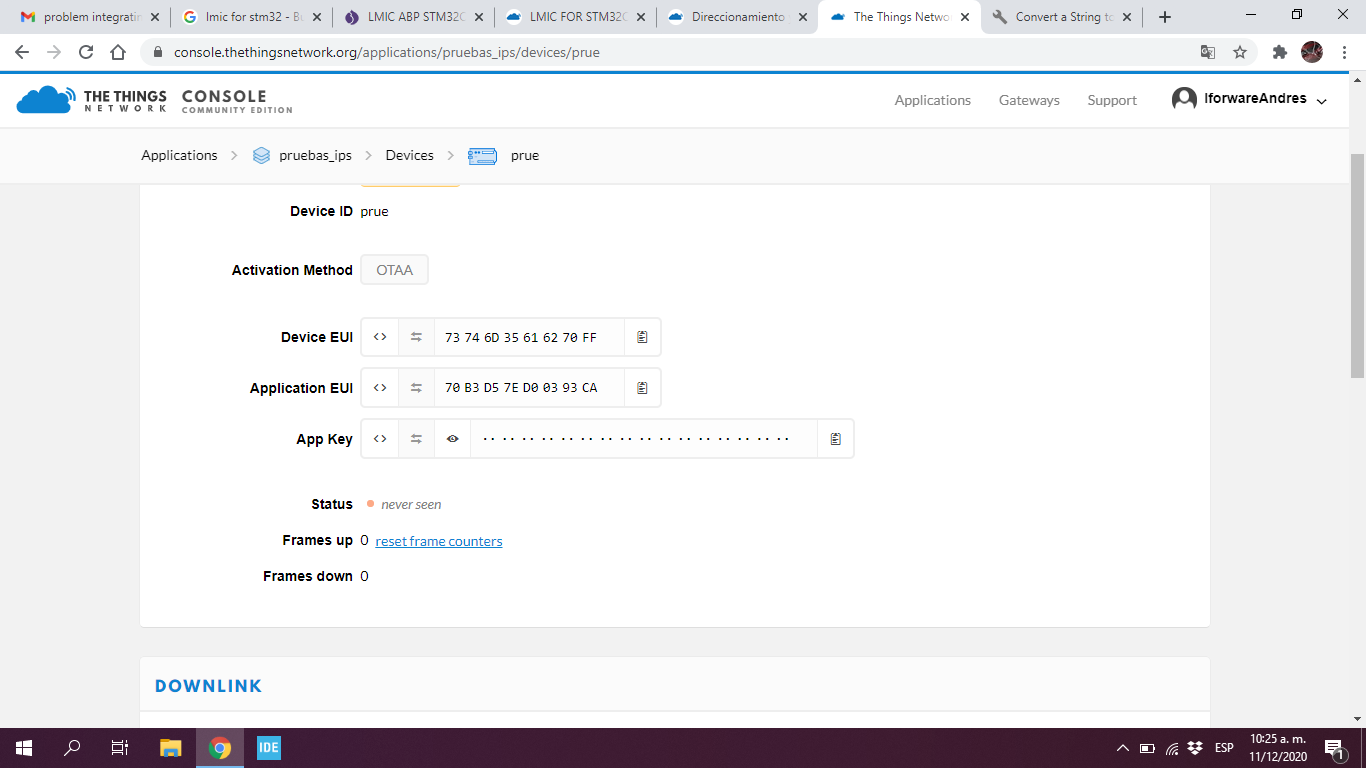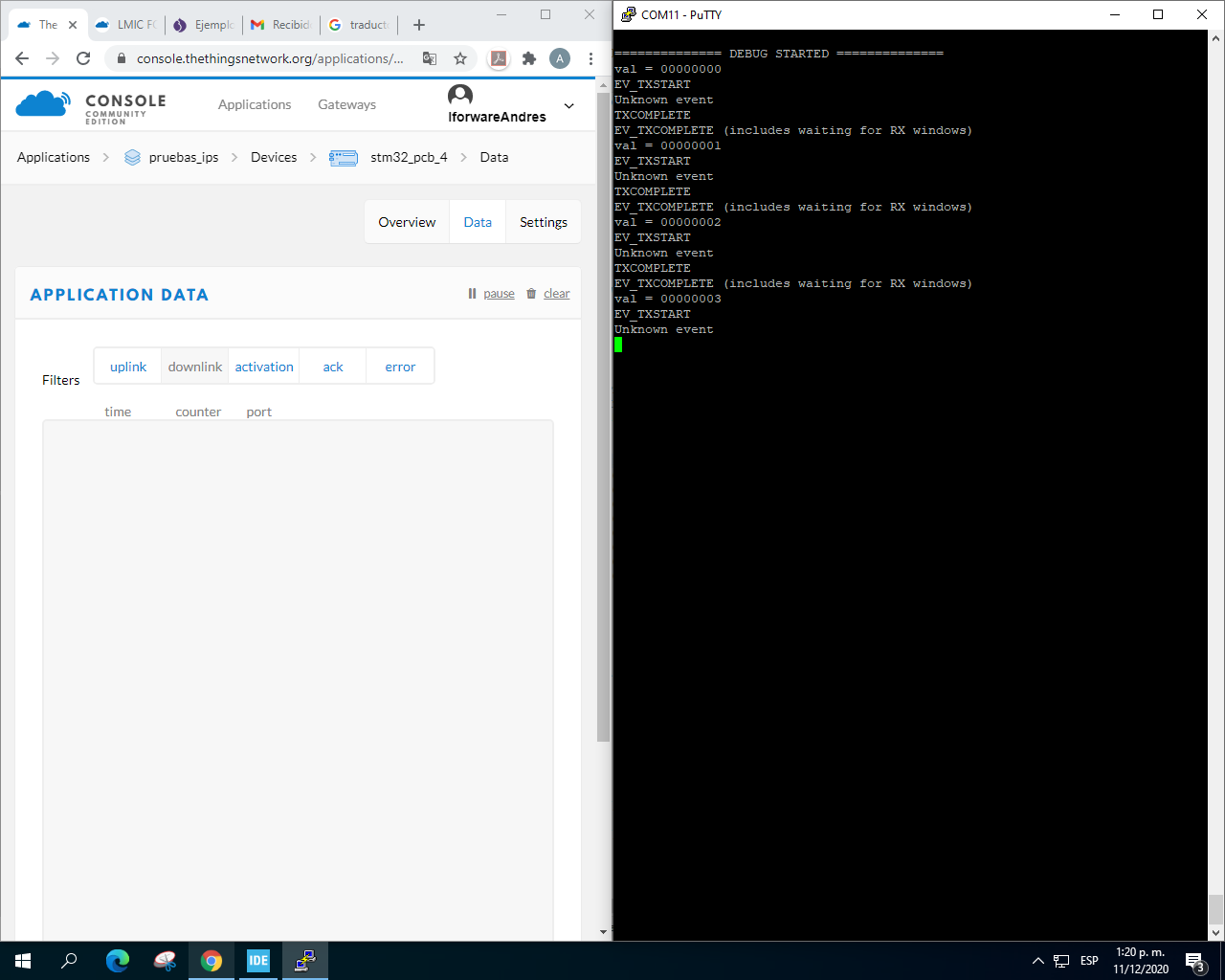hi
i just released my LMIC FOR STM32CubeMX files …
go to http://iotbyskovholm.dk/?q=content/ibm-lmic-stm32cubemx and see video on how to do and download the modified LMIC…
hope it help you
best regards
Hjalmar Skovholm Hansen
hi
i just released my LMIC FOR STM32CubeMX files …
go to http://iotbyskovholm.dk/?q=content/ibm-lmic-stm32cubemx and see video on how to do and download the modified LMIC…
hope it help you
best regards
Hjalmar Skovholm Hansen
Great!
Thank you!
Hi! i have a question,
what is the use of “static const u1_t DEVKEY [16]”.
y
I need to configure my lora module in 915, what should I change in this part ?:
// ABP
uint8_t appskey [sizeof (APPSKEY)];
uint8_t nwkskey [sizeof (NWKSKEY)];
memcpy (appskey, APPSKEY, sizeof (APPSKEY));
memcpy (nwkskey, NWKSKEY, sizeof (NWKSKEY));
LMIC_setSession (0x1, DEVADDR, nwkskey, appskey);
LMIC_setupChannel (0, 868100000, DR_RANGE_MAP (DR_SF12, DR_SF7), BAND_CENTI); // g-band
LMIC_setupChannel (1, 868300000, DR_RANGE_MAP (DR_SF12, DR_SF7B), BAND_CENTI); // g-band
LMIC_setupChannel (2, 868500000, DR_RANGE_MAP (DR_SF12, DR_SF7), BAND_CENTI); // g-band
LMIC_setupChannel (3, 867100000, DR_RANGE_MAP (DR_SF12, DR_SF7), BAND_CENTI); // g-band
LMIC_setupChannel (4, 867300000, DR_RANGE_MAP (DR_SF12, DR_SF7), BAND_CENTI); // g-band
LMIC_setupChannel (5, 867500000, DR_RANGE_MAP (DR_SF12, DR_SF7), BAND_CENTI); // g-band
LMIC_setupChannel (6, 867700000, DR_RANGE_MAP (DR_SF12, DR_SF7), BAND_CENTI); // g-band
LMIC_setupChannel (7, 867900000, DR_RANGE_MAP (DR_SF12, DR_SF7), BAND_CENTI); // g-band
LMIC_setupChannel (8, 868800000, DR_RANGE_MAP (DR_FSK, DR_FSK), BAND_MILLI); // g2-band
// Disable link check validation
LMIC_setLinkCheckMode (0);
// TTN uses SF9 for its RX2 window.
LMIC.dn2Dr = DR_SF9;
// Set data rate and transmit power for uplink (note: txpow seems to be ignored by the library)
LMIC_setDrTxpow (DR_SF7,14);
os_setTimedCallback (j, os_getTime (), reportfunc);
// ABP
Thanks!!
Hi
thanks for the information on how to use ABP mode with STM32 and LMIC
but I have several problems when making the configuration
I have a 915Mhz RFM95 (SX1276) module
How can I configure the LMIC_setupChannel () function for my working frequency?
Hi
use CFG_915 in definition
Hjalmar
have been successful using the library in OTTA mode at a frequency of 915Mhz, but the union time with the TTN server is very long
How can I reduce this time?
or
What changes should I make to use the ABP modality?
Hi
On my website http://iotbyskovholm.dk/?q=content/lmic-abp-stm32cubemx-example
you can find an exsample how to do
Hjalmar
Hello
I already tried this code at a frequency of 915Mhz but I can’t see the data in TTN
My biggest problem is what configuration you must have in the TTN server to get the keys correctly
APPEUI
DEVEUI
DEVKEY
NWKSKEY
APPSKEY
DEVADDR
or which of these are the ones that I should modify?
Depends on if you are connecting via ABP or OTAA!
https://www.thethingsnetwork.org/docs/lorawan/addressing.html
Hello
when i create a device in ABP mode it just gives me these keys
and I am missing

and in OTTA mode it gives me these the keys
APPEUI
DEVEUI
DEVKEY

That depends on the mode
APPEUI
DEVEUI
DEVKEY
These are relevant only to OTAA. For ABP they would be ignored, eg, it does not matter if they are wrong. Also what LMiC calls DEVKEY TTN calls APPKEY
NWKSKEY
APPSKEY
DEVADDR
These are all that are needed for ABP, and only needed for ABP
So, no, to use ABP you don’t need a DEVKEY (APPKEY) - if you were using OTAA, that would be the root key used to derive the session keys APPSKEY and NWKSKEY dynamically through the join request and join accept. But in ABP you simply set the session keys themselves, and there is no join, you just start sending correctly encrypted packets.
Hi how are you
By chance you have an example using ABP with the LMIC library for stm32cube in which it worked correctly taking into account what you just suggested.
No, unfortunately this doesn’t appear to be a fork of LMiC tied to others by any common git history. (That said, it’s rather hard to keep Arduino and non-Arduino LMiC’s in sync…)
Why don’t you try the author’s proposed ABP example, and fill in the details I explained above are needed for ABP, while leaving the ones only relevant to OTAA at whatever default values they are in the example code?
I already managed to make the code work in ABP mode
I only have one problem, the transmission is not very consistent

For clarity for you & other readers, this is Device Address
**EDIT: no it’s not, I got it wrong, “The DEVKEY is LMiC’s antiquated name for the APPKEY”
DEVKEY? Perhaps App Key?
Not consistent or not ever working?
rather, it takes a long time to make the first transmission in ABP knowing that you already have the defined access keys and therefore you do not have to do a union management with the TTN server
Let me guess, you first received transmission dies not start at counter 0. Do you reset the frame counter when restarting the node?
I have disabled the counter
The problem most of all is in making the first transmission after loading the code or a reset
Hello,
is there also a conversion for the LorABoard B-L072Z-LRWAN1 with the CMWX1ZZABZ-091 open module by Murata? (STM32Cube)
Greetings
E_T